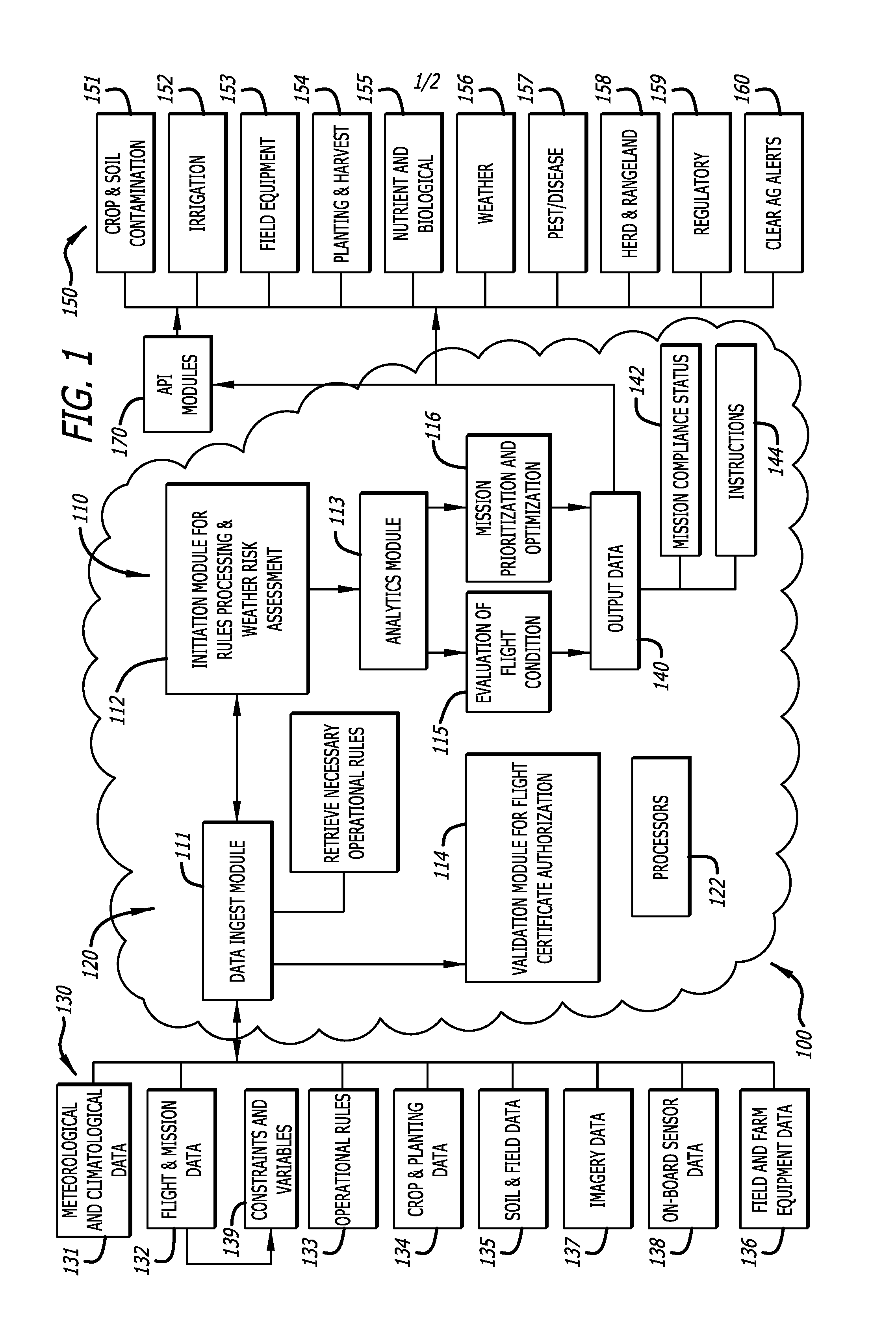Mission prioritization and work order arrangement for unmanned aerial vehicles and remotely-piloted vehicles
a technology for unmanned aerial vehicles and work orders, applied in vehicle position/course/altitude control, process and machine control, instruments, etc., can solve problems such as affecting even experienced and licensed operators, deteriorating flight conditions, and unsafe conditions, so as to prevent takeoff or prevent interference from recovery
- Summary
- Abstract
- Description
- Claims
- Application Information
AI Technical Summary
Benefits of technology
Problems solved by technology
Method used
Image
Examples
Embodiment Construction
[0017]In the following description of the present invention, reference is made to the exemplary embodiments illustrating the principles of the present invention and how it is practiced. Other embodiments will be utilized to practice the present invention and structural and functional changes will be made thereto without departing from the scope of the present invention.
[0018]The present invention is a weather risk analysis and flight advisory framework 100, embodied in one or more systems and methods that provide a service and application programming interface for combining weather risk analysis and an evaluation of flight conditions for takeoff, operation, flight path, payload delivery, and landing of unmanned aircraft systems that included unmanned aerial vehicles and remotely-piloted vehicles (UAVs / RPVs). The present invention is comprised of several components for performing the above objectives in the one or more systems and methods disclosed herein.
[0019]FIG. 1 is a block diag...
PUM
 Login to View More
Login to View More Abstract
Description
Claims
Application Information
 Login to View More
Login to View More - R&D
- Intellectual Property
- Life Sciences
- Materials
- Tech Scout
- Unparalleled Data Quality
- Higher Quality Content
- 60% Fewer Hallucinations
Browse by: Latest US Patents, China's latest patents, Technical Efficacy Thesaurus, Application Domain, Technology Topic, Popular Technical Reports.
© 2025 PatSnap. All rights reserved.Legal|Privacy policy|Modern Slavery Act Transparency Statement|Sitemap|About US| Contact US: help@patsnap.com


